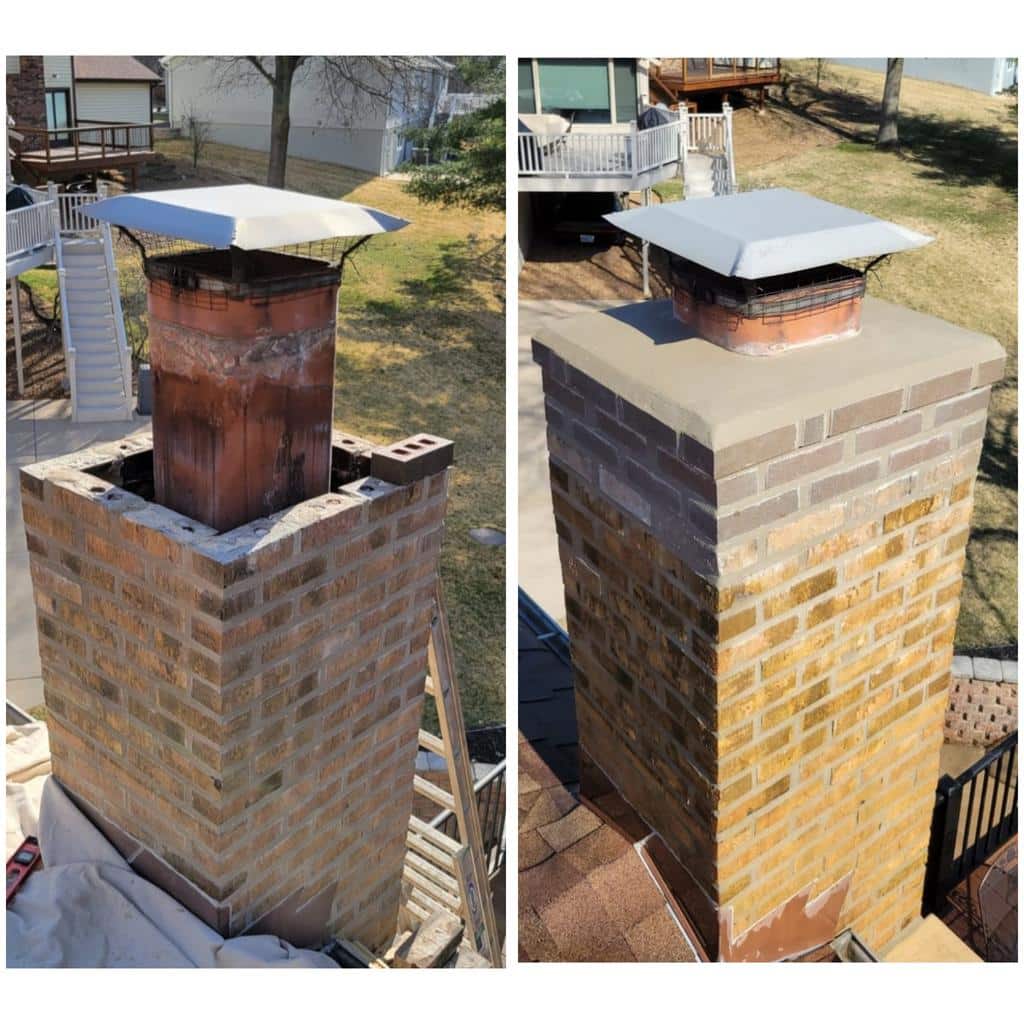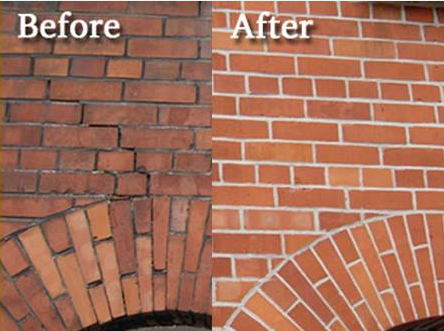. Experience Unparalleled Workmanship with Raul's Tuckpointing St. Louis MO Providers.
Wiki Article
Improve the Elegance and Sturdiness of Your Brickwork With Tuckpointing
Brickwork has actually long been esteemed for its ageless elegance and sturdiness. Nonetheless, in time, the mortar that holds those blocks with each other can weaken, leaving your framework vulnerable to damage and detracting from its visual allure. Worry not, for there is a remedy that can restore both the beauty and sturdiness of your brickwork: tuckpointing. This old-time strategy not just improves the visual charm of your brickwork, however likewise strengthens its architectural stability. What precisely is tuckpointing and how does it vary from repointing? And just how can you make certain that your tuckpointed brickwork stays in beautiful problem? In this discussion, we will certainly explore the basics of tuckpointing, its advantages, the difference in between tuckpointing and repointing, the process itself, and the essential methods for caring and maintaining for tuckpointed brickwork.The Basics of Tuckpointing
Tuckpointing is an experienced technique made use of to repair and enhance the look and structural honesty of brickwork. It includes the procedure of eliminating scrubby mortar joints and replacing them with fresh mortar. The term "tuckpointing" describes the practice of making use of two various colors of mortar to create the impression of fine joints, offering the brickwork a much more polished and visually pleasing appearance.
The initial step in tuckpointing is to carefully examine the condition of the brickwork. This includes inspecting the mortar joints for indicators of wear and tear, such as fracturing, crumbling, or missing out on mortar. When the trouble areas have actually been identified, the old mortar is very carefully removed utilizing specialized devices, such as a grinder or chisel, while guaranteeing that the bricks themselves stay undamaged.
After the old mortar has been removed, the next action is to prepare the joints for fresh mortar. This commonly includes cleaning out any kind of particles or loose material and dampening the joints to make sure appropriate attachment. An experienced tuckpointer utilizes an aiming trowel to meticulously fill the joints with fresh mortar, making sure to produce a consistent and flush surface area.
Advantages of Tuckpointing
Improving both the long life and appearance of brickwork, tuckpointing offers numerous remarkable advantages for house owners and home owners alike. By replacing shabby mortar joints, tuckpointing protects against moisture from seeping right into the brickwork, which can lead to architectural damage over time.Over time, mortar joints can end up being fractured, faded, or discolored, taking away from the total look of the brickwork. Tuckpointing entails meticulously getting rid of the harmed mortar and replacing it with fresh mortar of a contrasting color.
Along with boosting the long life and appearance of brickwork, tuckpointing can additionally enhance the worth of a residential or commercial property. Well-maintained brickwork is seen as a preferable feature by possible buyers and can significantly improve the curb appeal of a property. When the time comes to place the home on the market., this can lead to a greater selling rate and a quicker sale.
Tuckpointing Vs. Repointing: What's the Distinction?

To identify between tuckpointing and repointing, it is very important to understand the vital distinctions between these two approaches of brickwork remediation. While both techniques aim to preserve the architectural honesty and aesthetic appeal of brickwork, they differ in their method and execution.
Tuckpointing is a careful process that includes applying 2 various shades of mortar to produce the illusion of great joints. This technique is mostly made use of to boost the visual charm of brickwork by producing the appearance of well-kept and well-crafted joints. The colored mortar is meticulously used and formed to match the color and account of the initial mortar, offering the impression of accuracy and workmanship.
On the other hand, repointing is a more uncomplicated procedure that involves eliminating broken or deteriorated mortar from the joints and replacing it with fresh mortar. The primary objective of repointing is to bring back the structural stability of the brickwork by guaranteeing appropriate bonding and sealing in between the bricks. Unlike tuckpointing, repointing does not entail the use of colored mortar or the production of a decorative effect.
The Process of Tuckpointing
The application of 2 different colors of mortar to produce the impression of great joints is a precise process referred to as tuckpointing. This strategy includes getting rid of scrubby mortar joints and changing them with new mortar to boost the appearance and structural honesty of the brickwork. The process of tuckpointing can be split right into several actions.First, the old mortar is carefully eliminated making use of specialized tools such as grinders and chisels. It is essential to remove the mortar to an adequate deepness to ensure a strong bond with the brand-new mortar.
Following, the joints are thoroughly cleansed to get rid of any debris or dirt. This aids to create a clean surface area for the brand-new mortar to comply with.
As soon as the joints are cleaned up, a thin layer of brand-new mortar is used to the joint making use of a little aiming trowel. This first layer, referred to as the "punctuating" mortar, is normally the very same shade as the existing mortar.
After the initial why not try this out layer has been applied, a second layer of mortar is applied on top of it. This second layer, called the "fillet" mortar, is a different color and is meticulously formed to develop the impression of a great joint.

Keeping and Caring for Tuckpointed Brickwork
When the tuckpointing process is finished, appropriate maintenance and treatment are necessary to maintain the improved beauty and resilience of the brickwork. This upkeep not just guarantees that the tuckpointed locations stay practical and undamaged however also assists to stop any possible damage to the total structure.One of the crucial aspects of preserving tuckpointed brickwork is normal cleaning. It is crucial to avoid utilizing any kind of rough chemicals or abrasive devices that might potentially harm the mortar or the bricks themselves.
In addition to cleaning, it is essential to check the tuckpointed areas periodically. This enables the very early detection of any kind of signs of degeneration or damages. Any splits, loose mortar, or indications of water damages need to be dealt with without delay to view website stop further degeneration.
In addition, ensuring proper drainage around the brickwork is vital. Water merging or inappropriate drainage can lead to moisture penetration, which can compromise the mortar and trigger architectural damages. Cleaning downspouts and seamless gutters regularly and ensuring that they are properly directed away from the brickwork can help prevent these issues.
Lastly, it is recommended to seek advice from with a specialist tuckpointing contractor for normal upkeep and fixings. Their expertise and experience can make certain that any kind of essential fixings are done properly, preserving the integrity and longevity of the tuckpointed brickwork.
Conclusion
In verdict, visite site tuckpointing is an useful method for enhancing the appeal and sturdiness of brickwork. It provides countless advantages, such as improving the architectural integrity of the stonework and avoiding dampness penetration. Tuckpointing involves the elimination and replacement of tatty mortar, leading to a clean and consistent look. By effectively preserving and caring for tuckpointed brickwork, house owners can ensure its durability and continue to enjoy its visual appeal.
It includes the procedure of removing scrubby mortar joints and changing them with fresh mortar. Raul's Tuckpointing St. Louis MO.After the old mortar has been gotten rid of, the following step is to prepare the joints for fresh mortar. Tuckpointing includes meticulously removing the harmed mortar and changing it with fresh mortar of a different color. The colored mortar is very carefully used and formed to match the color and profile of the initial mortar, offering the impression of precision and craftsmanship

Report this wiki page